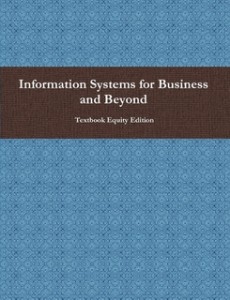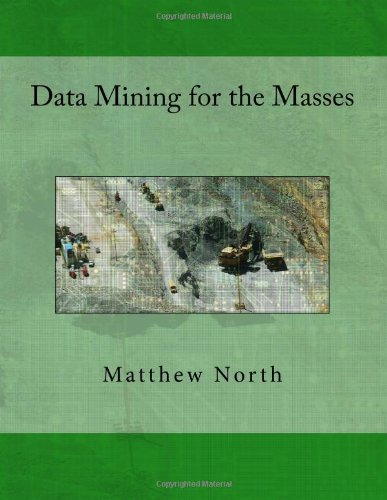Accounting Principles Vol1.pdf
Accounting Principles Vol2.pdf
These links are to the original CC-BY versions provided by Global Text Project of the University of Georgia in 2010.
Accounting Principles Vol1.pdf
Accounting Principles Vol2.pdf
These links are to the original CC-BY versions provided by Global Text Project of the University of Georgia in 2010.

 Originally provided by by Openstax College (Rice University) in PDF and online format in one volume.
Originally provided by by Openstax College (Rice University) in PDF and online format in one volume.
Download volumes 1 and 2 in one free PDF (824 pages, 114 Mb)
Purchase print: Principles of Economics, Vol 1 Chapters 1 – 23 (493 pages) $39.95 USD
Purchase print: Principles of Economics, Vol 2 Chapters 24-34 and appendices. (350 pages) $34.95 USD
Principles of Economics covers the scope and sequence for a two-semester principles of economics course. The text also includes many current examples, including; discussions on the great recession, the controversy among economists over the Affordable Care Act (Obamacare), the recent government shutdown, and the appointment of the United States’ first female Federal Reserve chair, Janet Yellen.
The pedagogical choices, chapter arrangements, and learning objective fulfillment were developed and vetted with feedback from educators dedicated to the project. The outcome is a balanced approach to micro and macro economics, to both Keynesian and classical views, and to the theory and application of economics concepts. Current events are treated in a politically-balanced way, as well.
Volume 1 Chapter 1 – 23
Welcome to Economics!
Choice in a World of Scarcity
Demand and Supply
Labor and Financial Markets
Elasticity
Consumer Choices
Cost and Industry Structure
Perfect Competition
Monopoly
Monopolistic Competition and Oligopoly
Monopoly and Antitrust Policy
Environmental Protection and Negative Externalities
Positive Externalities and Public Goods
Poverty and Economic Inequality
Issues in Labor Markets: Unions, Discrimination, Immigration
Information, Risk, and Insurance
Financial Markets
Public Choice
The Macroeconomic Perspective
Economic Growth
Unemployment
Inflation
The International Trade and Capital Flows
Volume 2 Chapters 24 – 34 and Appendices
The Aggregate Supply-Aggregate Demand Model
The Keynesian Perspective
The Neoclassical Perspective
Money and Banking
Monetary Policy and Bank Regulation
Exchange Rates and International Capital Flows
Government Budgets and Fiscal Policy
The Macroeconomic Impacts of Government Borrowing
Macroeconomic Policy Around the World
International Trade
Globalization and Protectionism
The Use of Mathematics in Principles of Economics
Demand, Supply, and Efficiency
Indifference Curves
Present Discounted Value
The Expenditure-Output Model
 Provided by Openstax College (Rice University)
Provided by Openstax College (Rice University)
Download free PDF (508 pages, 34MB)
Print version from Openstax College (~$30.00 USD)
From their website: “Introduction to Sociology is intended for a one-semester introductory sociology course. Conceived of and developed by active sociology instructors,. This online, fully editable and customizable title includes sociology theory and research; real-world applications; simplify and debate features; and learning objectives for each chapter.”
Peer reviewed plus faculty supplements.
Table of Contents
Preface
An Introduction to Sociology
Sociological Research
Culture
Society and Social Interaction
Socialization
Groups and Organization
Deviance, Crime, and Social Control
Media and Technology
Social Stratification in the United States
Global Inequality
Race and Ethnicity
Gender, Sex, and Sexuality
Aging and the Elderly
Marriage and Family
Religion
Education
Government and Politics
Work and the Economy
Health and Medicine
Population, Urbanization, and the Environment
Social Movements and Social Change
 “Computer Networking : Principles, Protocols and Practice”
“Computer Networking : Principles, Protocols and Practice”
Complementary textbook to Saylor Academy’s “Computer Communications and Networks” (CS402)
Original textbook © October 31, 2011 by Olivier Bonaventure, is licensed under a Creative Commons Attribution (CC BY) license made possible by funding from The Saylor Foundation’s Open Textbook Challenge in order to be incorporated into Saylor’s collection of open courses available at: http://www.saylor.org.
Print $29.95 USD, 282 pages, B&W
ISBN: 978-1-365-18583-0
Free PDF Color, 282 pages, 8.6 MB
This open textbook aims to fill the gap between the open-source implementations and the open-source network specifications by providing a detailed but pedagogical description of the key principles that guide the operation of the Internet. The book is released under a creative commons licence. Such an open-source license is motivated by two reasons. The first is that we hope that this will allow many students to use the book to learn computer networks. The second is that I hope that other teachers will reuse, adapt and improve it. Time will tell if it is possible to build a community of contributors to improve and develop the book further. As a starting point, the first release contains all the material for a one-semester first upper undergraduate or a graduate networking course.
Table of Contents
1 Preface
2 Introduction
2.1 Services and protocols
2.2 The reference models
2.3 Organisation of the book
3 The application Layer
3.1 Principles
3.2 Application-level protocols
3.3 Writing simple networked applications
4 The transport layer
4.1 Principles of a reliable transport protocol
4.2 The User Datagram Protocol
4.3 The Transmission Control Protocol
5 The network layer
5.1 Principles
5.2 Internet Protocol
5.3 Routing in IP networks
6 The datalink layer and the Local Area Networks
6.1 Principles
6.2 Medium Access Control
6.3 Datalink layer technologies
7 Glossary
8 Bibliography
 A college-level open education resource (CC BY) thanks to the Saylor Foundation and David T. Bourgeois, Ph.D.
A college-level open education resource (CC BY) thanks to the Saylor Foundation and David T. Bourgeois, Ph.D.
This text is used in Saylor’s free course “Management Information Systems” at https://learn.saylor.org/course/view.php?id=41
Purchase a print copy (167 pages, b&w) $22.95
Download the PDF (free, 167 pages, 4.3 Mb)
The Saylor Academy also offers several e-book formats of this open textbook.
ISBN: 978-1-304-94348-4
“This book is written as an introductory text, meant for those with little or no experience with computers or information systems. While sometimes the descriptions can get a little bit technical, every effort has been made to convey the information essential to understanding a topic while not getting bogged down in detailed terminology or esoteric discussions. . . . At the end of each chapter, there is a set of study questions and exercises (except for chapter 1, which only offers study questions). The study questions can be assigned to help focus students’ reading on the learning objectives. The exercises are meant to be a more in-depth, experiential way for students to learn chapter topics. It is recommended that you review any exercise before assigning it, adding any detail needed (such as length, due date) to complete the assignment.”
Contents
Introduction
Part 1: What Is an Information System?
Chapter 1: What Is an Information System?
Chapter 2: Hardware
Chapter 3: Software
Chapter 4: Data and Databases
Chapter 5: Networking and Communication
Chapter 6: Information Systems Security
Part 2: Information Systems for Strategic Advantage
Chapter 7: Does IT Matter?
Chapter 8: Business Processes
Chapter 9: The People in Information Systems
Chapter 10: Information Systems Development
Part 3: Information Systems Beyond the Organization
Chapter 11: Globalization and the Digital Divide
Chapter 12: The Ethical and Legal Implications of Information Systems
Chapter 13: Future Trends in Information Systems
Answers to Study Questions 150
Bibliography 162
A open education resource (CC BY) thanks to the Saylor Foundation and Kenneth Kuttler, PhD.
Purchase a print copy (503 pages) $39.95
(503 pages) $39.95
Download the PDF (free, 503 pages, 6 Mb)
ISBN: 9781304912794
This is a book on linear algebra and matrix theory. While it is self contained, it will work best for those who have already had some exposure to linear algebra. It is also assumed that the reader has had calculus. Some optional topics require more analysis than this, however. I think that the subject of linear algebra is likely the most significant topic discussed in undergraduate mathematics courses. Part of the reason for this is its usefulness in unifying so many different topics. Linear algebra is essential in analysis, applied math, and even in theoretical mathematics. This is the point of view of this book, more than a presentation of linear algebra for its own sake. This is why there are numerous applications, some fairly unusual.
Purchase Print $ 35.95
$ 35.95
paperback, 433 pages,
ISBN 978-1-304-90600-7
Download free Textbook (pdf) (433 pages, 5 Mb)
Download free Solutions Manual (pdf) (158 pages, 3 Mb) (no print version)
https://www.math.byu.edu/klkuttle/
(CC BY) This is an introduction to linear algebra. The main part of the book features row operations and everything is done in terms of the row reduced echelon form and specific algorithms. At the end, the more abstract notions of vector spaces and linear transformations on vector spaces are presented. However, this is intended to be a first course in linear algebra for students who are sophomores or juniors who have had a course in one variable calculus and a reasonable background in college algebra.
 (17Mb, 264 pages)
(17Mb, 264 pages)
View original website: A Global Text Project Book
Print Version: This book is available on Amazon.com by the author: ISBN-13: 978-0615684376
This book is licensed under a Creative Commons Attribution 3.0 License
Introduction 3
A Note About Tools 4
The Data Mining Process 5
Data Mining and You 11
Context and Perspective 13
Learning Objectives 14
Purposes, Intents and Limitations of Data Mining 15
Database, Data Warehouse, Data Mart, Data Set…? 15
Types of Data 19
A Note about Privacy and Security 20
Chapter Summary 21
Review Questions 22
Exercises 22
Context and Perspective 25
Learning Objectives 25
Collation 27
Data Scrubbing 28
Hands on Exercise 29
Preparing RapidMiner, Importing Data, and 30
Handling Missing Data 30
Data Reduction 46
Handling Inconsistent Data 50
Attribute Reduction 52
Chapter Summary 54
Review Questions 55
Exercise 55
Context and Perspective 59
Learning Objectives 59
Organizational Understanding 59
Data Understanding 60
Data Preparation 60
Modeling 62
Evaluation 63
Deployment 65
Chapter Summary 67
Review Questions 68
Exercise 68
Context and Perspective 73
Learning Objectives 73
Organizational Understanding 73
Data Understanding 74
Data Preparation 76
Modeling 81
Evaluation 84
Deployment 87
Chapter Summary 87
Review Questions 88
Exercise 88
Context and Perspective 91
Learning Objectives 91
Organizational Understanding 91
Data UnderstanDing 92
Data Preparation 92
Modeling 94
Evaluation 96
Deployment 98
Chapter Summary 101
Review Questions 101
Exercise 102
Context and Perspective 105
Learning Objectives 105
Organizational Understanding 106
Data Understanding 106
Data Preparation 109
Modeling 114
Evaluation 118
Deployment 120
Chapter Summary 121
Review Questions 122
Exercise 123
Context and Perspective 127
Learning Objectives 127
Organizational Understanding 128
Data Understanding 128
Data Preparation 129
Modeling 131
Evaluation 132
Deployment 134
Chapter Summary 137
Review Questions 137
Exercise 138
Context and Perspective 141
Learning Objectives 141
Organizational Understanding 142
Data Understanding 142
Data Preparation 143
Modeling 147
Evaluation 148
Deployment 151
Chapter Summary 153
Review Questions 154
Exercise 154
Context and Perspective 157
Learning Objectives 157
Organizational Understanding 158
Data Understanding 159
Data Preparation 161
Modeling 166
Evaluation 169
Deployment 171
Chapter Summary 172
Review Questions 172
Exercise 173
Context and Perspective 175
Learning Objectives 175
Organizational Understanding 175
Data Understanding 176
Data Preparation 178
Modeling 181
Evaluation 181
Deployment 184
Chapter Summary 186
Review Questions 187
Exercise 187
Context and Perspective 189
Learning Objectives 189
Organizational Understanding 190
Data Understanding 190
Data Preparation 191
Modeling 202
Evaluation 203
Deployment 213
Chapter Summary 213
Review Questions 214
Exercise 214
217
How Far We’ve Come 219
Learning Objectives 220
Cross-Validation 221
Chapter Summary: The Value of Experience 227
Review Questions 228
Exercise 228
Why Data Mining Ethics? 231
Ethical Frameworks and Suggestions 233
Conclusion 235
GLOSSARY and INDEX 237
About the Author 251
“Introductory Statistics” Volume 1 & 2 (2013)
• Examples are placed strategically throughout the text to show students the step-by-step process of interpreting and solving statistical problems. To keep the text relevant for students, the examples are drawn from a broad spectrum of practical topics; these include examples about college life and learning, health and medicine, retail and business, and sports and entertainment.
• Try It practice problems immediately follow many examples and give students the opportunity to practice as they read the text. They are usually based on practical and familiar topics, like the Examples themselves.
• Collaborative Exercises provide an in-class scenario for students to work together to explore presented concepts.
• Using the TI-83, 83+, 84, 84+ Calculator shows students step-by-step instructions to input problems into their calculator.
• The Technology Icon indicates where the use of a TI calculator or computer software is recommended.
• Practice, Homework, and Bringing It Together problems give the students problems at various degrees of difficulty while also including real-world scenarios to engage students.
Used Extensively for Many Years
Buy Print Format Volume 2 $15.00 (quality paperback, grayscale, 128 pages)
Download Volume 1 “Introductory Statistics” (All chapters, excludes extra exercises and appendices) (free pdf, 733 pages, 30 Mb)
Download Volume 2 (Extra Exercises and Appendices) (free pdf, 128 pages, 2.3 Mb)
Download full textbook (free pdf, 28 MB, 850 pages)
View Original Author’s Website
Definitions of Statistics, Probability, and Key Terms
1.2 Data, Sampling, and Variation in Data and Sampling
1.3 Frequency, Frequency Tables, and Levels of Measurement
1.4 Experimental Design and Ethics
2.1 Stem-and-Leaf Graphs (Stemplots), Line Graphs, and Bar Graphs
2.2 Histograms, Frequency Polygons, and Time Series Graphs
2.3 Measures of the Location of the Data
2.4 Box Plots
2.5 Measures of the Center of the Data
2.6 Skewness and the Mean, Median, and Mode
2.7 Measures of the Spread of the Data
3.1 Terminology 164
3.2 Independent and Mutually Exclusive Events
3.3 Two Basic Rules of Probability
3.4 Contingency Tables
3.5 Tree and Venn Diagrams
4.1 Probability Distribution Function (PDF) for a Discrete Random Variable
4.2 Mean or Expected Value and Standard Deviation
4.3 Binomial Distribution
4.4 Geometric Distribution
4.5 Hypergeometric Distribution
4.6 Poisson Distribution
5.1 Continuous Probability Functions
5.2 The Uniform Distribution
5.3 The Exponential Distribution
6.1 The Standard Normal Distribution
6.2 Using the Normal Distribution
7.1 The Central Limit Theorem for Sample Means (Averages)
7.2 The Central Limit Theorem for Sums
7.3 Using the Central Limit Theorem
8.1 A Single Population Mean using the Normal Distribution
8.2 A Single Population Mean using the Student t Distribution
8.3 A Population Proportion 427
9.1 Null and Alternative Hypotheses
9.2 Outcomes and the Type I and Type II Errors
9.3 Distribution Needed for Hypothesis Testing
9.4 Rare Events, the Sample, Decision and Conclusion
9.5 Additional Information and Full Hypothesis Test Examples
10.1 Two Population Means with Unknown Standard Deviations
10.2 Two Population Means with Known Standard Deviations
10.3 Comparing Two Independent Population Proportions
10.4 Matched or Paired Samples
11.1 Facts About the Chi-Square Distribution
11.2 Goodness-of-Fit Test
11.3 Test of Independence
11.4 Test for Homogeneity
11.5 Comparison of the Chi-Square Tests
11.6 Test of a Single Variance
12.1 Linear Equations
12.2 Scatter Plots
12.3 The Regression Equation
12.4 Testing the Significance of the Correlation Coefficient
12.5 Prediction
12.6 Outliers
13.1 One-Way ANOVA
13.2 The F Distribution and the F-Ratio
13.3 Facts About the F Distribution
13.4 Test of Two Variances
Appendix A: Review Exercises (Ch 3-13)
Appendix B: Practice Tests (1-4) and Final Exams
Appendix C: Data Sets
Appendix D: Group and Partner Projects
Appendix E: Solution Sheets
Appendix F: Mathematical Phrases, Symbols, and Formulas
Appendix G: Notes for the TI-83, 83+, 84, 84+ Calculators
Appendix H: Tables
Index
 Now Available! Exam Question Bank Volume 1
Now Available! Exam Question Bank Volume 1
This textbook is an Open Education Resource provided under a Creative Commons license (CC-BY), permitting the copying, printing, repurposing and redistribution of all or some of its contents.
Free Download Volume 1 of 3 (full color pdf, 76 Mb)
Volume 1, Units 1 & 2, Chapters 1- 11, pages 1-472, plus complete table of contents and index
$ Purchase Print Version of Volume 1 ($39.95+ s&h) (grayscale version)$
Other Volumes
Volume 2, Units 3 & 4, Chapters 12 – 21, p. 469 – 972, plus complete table of contents and index [in process]
Volume 3, Units 5 & 6, Chapter 22 – 28, p. 973 – 1270, plus complete table of contents and index
Free Download original textbook (full color pdf, 131 Mb, 1358 pages)
Textbook Provenance: Originally published by OpenStax College (Rice University) See the frontmatter of any volume for complete provenance.
Unit 1: Levels of Organization
An Introduction to the Human Body
Overview of Anatomy and Physiology
Structural Organization of the Human Body
Functions of Human Life
Requirements for Human Life
Homeostasis
Anatomical Terminology
Medical Imaging
The Chemical Level of Organization
Elements and Atoms: The Building Blocks of Matter
Chemical Bonds
Chemical Reactions
Inorganic Compounds Essential to Human Functioning
Organic Compounds Essential to Human Functioning
The Cellular Level of Organization
. The Cell Membrane
. The Cytoplasm and Cellular Organelles
. The Nucleus and DNA Replication
. Protein Synthesis
. Cell Growth and Division
. Cellular Differentiation
The Tissue Level of Organization
. Types of Tissues
. Epithelial Tissue
. Connective Tissue Supports and Protects
. Muscle Tissue and Motion
. Nervous Tissue Mediates Perception and Response
. Tissue Injury and Aging
Unit 2: Support and Movement
The Integumentary System
. Layers of the Skin
. Accessory Structures of the Skin
. Functions of the Integumentary System
. Diseases, Disorders, and Injuries of the Integumentary System
Bone Tissue and the Skeletal System
. The Functions of the Skeletal System
. Bone Classification
. Bone Structure
. Bone Formation and Development
. Fractures: Bone Repair
. Exercise, Nutrition, Hormones, and Bone Tissue
. Calcium Homeostasis: Interactions of the Skeletal System and Other Organ Systems .
Axial Skeleton
. Divisions of the Skeletal System
. The Skull
. The Vertebral Column
. The Thoracic Cage
. Embryonic Development of the Axial Skeleton
The Appendicular Skeleton
. The Pectoral Girdle
. Bones of the Upper Limb
. The Pelvic Girdle and Pelvis
. Bones of the Lower Limb
. Development of the Appendicular Skeleton
Joints
. Classification of Joints
. Fibrous Joints
. Cartilaginous Joints
. Synovial Joints
. Types of Body Movements
. Anatomy of Selected Synovial Joints
. Development of Joints
Muscle Tissue
. Overview of Muscle Tissues
. Skeletal Muscle
. Muscle Fiber Contraction and Relaxation
. Nervous System Control of Muscle Tension
. Types of Muscle Fibers
. Exercise and Muscle Performance
. Cardiac Muscle Tissue
. Smooth Muscle
. Development and Regeneration of Muscle Tissue
The Muscular System
Interactions of Skeletal Muscles, Their Fascicle Arrangement, and Their Lever Systems
Naming Skeletal Muscles
Axial Muscles of the Head, Neck, and Back
Axial Muscles of the Abdominal Wall and Thorax
Muscles of the Pectoral Girdle and Upper Limbs
Appendicular Muscles of the Pelvic Girdle and Lower Limbs
Unit 3 : Regulation, Integration, and Control
The Nervous System and Nervous Tissue
Basic Structure and Function of the Nervous System
Nervous Tissue
The Function of Nervous Tissue
The Action Potential
Communication Between Neurons
Anatomy of the Nervous System
. The Embryologic Perspective
. The Central Nervous System
. Circulation and the Central Nervous System
. The Peripheral Nervous System
The Brain and Cranial Nerves
. Sensory Perception
. Central Processing
. Motor Responses
The Autonomic Nervous System
. Divisions of the Autonomic Nervous System
. Autonomic Reflexes and Homeostasis
. Central Control
. Drugs that Affect the Autonomic System
The Neurological Exam
. Overview of the Neurological Exam
. The Mental Status Exam
. The Cranial Nerve Exam
. The Sensory and Motor Exams
. The Coordination and Gait Exams
The Endocrine System
. An Overview of the Endocrine System
. Hormones
. The Pituitary Gland and Hypothalamus
. The Thyroid Gland
. The Parathyroid Glands
. The Adrenal Glands
. The Pineal Gland
. Gonadal and Placental Hormones
. The Endocrine Pancreas
. Organs with Secondary Endocrine Functions
. Development and Aging of the Endocrine System
Unit 4 : Fluids and Transport
The Cardiovascular System: Blood
. An Overview of Blood
. Production of the Formed Elements
. Erythrocytes
. Leukocytes and Platelets
. Hemostasis
. Blood Typing
The Cardiovascular System: The Heart
. Heart Anatomy
. Cardiac Muscle and Electrical Activity
. Cardiac Cycle
. Cardiac Physiology
. Development of the Heart
The Cardiovascular System: Blood Vessels and Circulation
. Structure and Function of Blood Vessels
. Blood Flow, Blood Pressure, and Resistance
. Capillary Exchange
. Homeostatic Regulation of the Vascular System
. Circulatory Pathways
. Development of Blood Vessels and Fetal Circulation
The Lymphatic and Immune System
Anatomy of the Lymphatic and Immune Systems
Barrier Defenses and the Innate Immune Response
The Adaptive Immune Response: T lymphocytes and Their Functional Types
The Adaptive Immune Response: B-lymphocytes and Antibodies
The Immune Response against Pathogens
Diseases Associated with Depressed or Overactive Immune Responses
Transplantation and Cancer Immunology
Unit 5: Energy, Maintenance, and Environmental Exchange
The Respiratory System
Organs and Structures of the Respiratory System
The Lungs
The Process of Breathing
Gas Exchange
Transport of Gases
Modifications in Respiratory Functions
Embryonic Development of the Respiratory System
The Digestive System
. Overview of the Digestive System
. Digestive System Processes and Regulation
. The Mouth, Pharynx, and Esophagus
. The Stomach
. The Small and Large Intestines
. Accessory Organs in Digestion: The Liver, Pancreas, and Gallbladder
. Chemical Digestion and Absorption: A Closer Look
Metabolism and Nutrition
. Overview of Metabolic Reactions
. Carbohydrate Metabolism
. Lipid Metabolism
. Protein Metabolism
. Metabolic States of the Body
. Energy and Heat Balance
. Nutrition and Diet
The Urinary System
. Physical Characteristics of Urine
. Gross Anatomy of Urine Transport
. Gross Anatomy of the Kidney
. Microscopic Anatomy of the Kidney
. Physiology of Urine Formation
. Tubular Reabsorption
. Regulation of Renal Blood Flow
. Endocrine Regulation of Kidney Function
. Regulation of Fluid Volume and Composition
. The Urinary System and Homeostasis
Fluid, Electrolyte, and Acid-Base Balance
. Body Fluids and Fluid Compartments
. Water Balance
. Electrolyte Balance
. Acid-Base Balance
. Disorders of Acid-Base Balance
Unit 6: Human Development and the Continuity of Life
The Reproductive System
. Anatomy and Physiology of the Male Reproductive System
. Anatomy and Physiology of the Female Reproductive System
. Development of the Male and Female Reproductive Systems
Development and Inheritance
. Fertilization
. Embryonic Development
. Fetal Development
. Maternal Changes During Pregnancy, Labor, and Birth
. Adjustments of the Infant at Birth and Postnatal Stages
. Lactation
. Patterns of Inheritance
Index